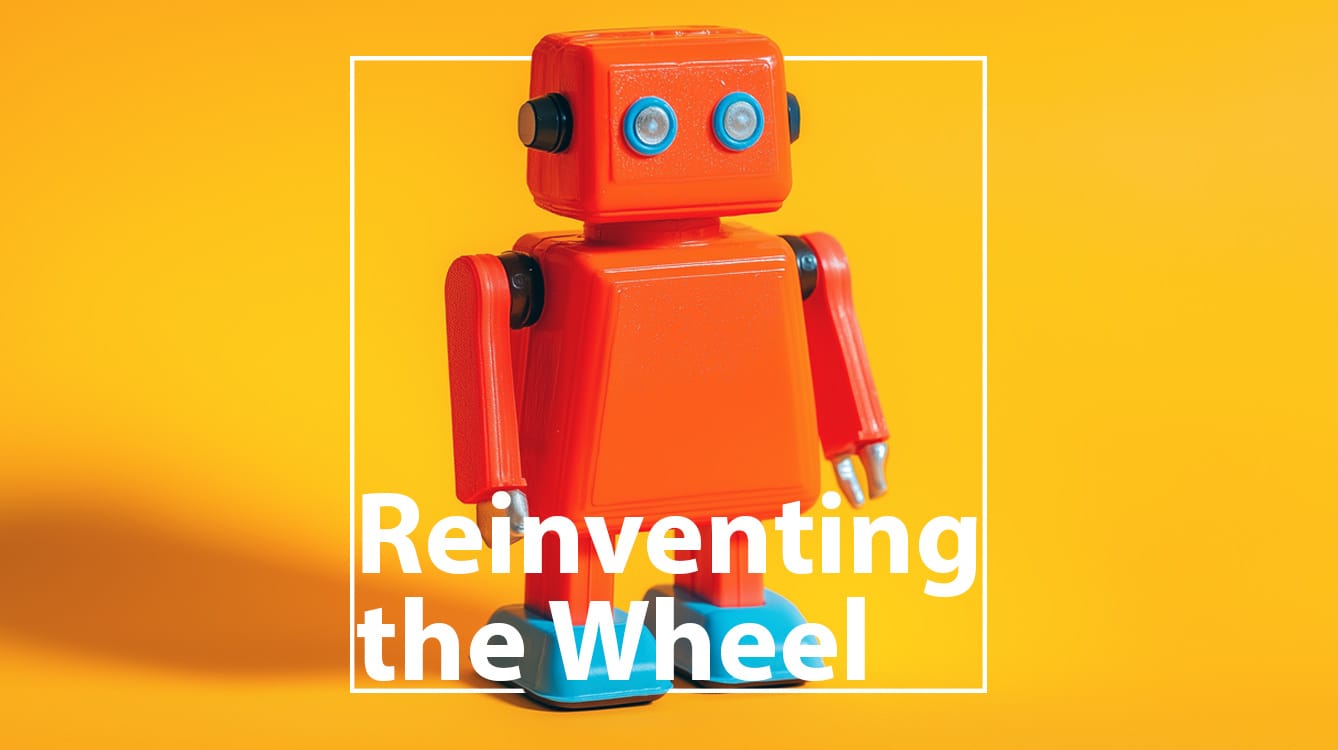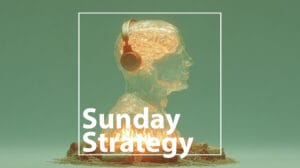What will advertising look like in a year? How about five or ten? Will it be familiar, or are the predictions of a systemic change going to come to pass, making something unrecognizable? It’s impossible to say with certainty what the industry will look like going forward, but to get a sense of its future direction, we have to consider its past. Where the industry has come from shows that it’s a cyclical process – a wheel that changes speed instead of structure.
The Six Flywheels of Advertising
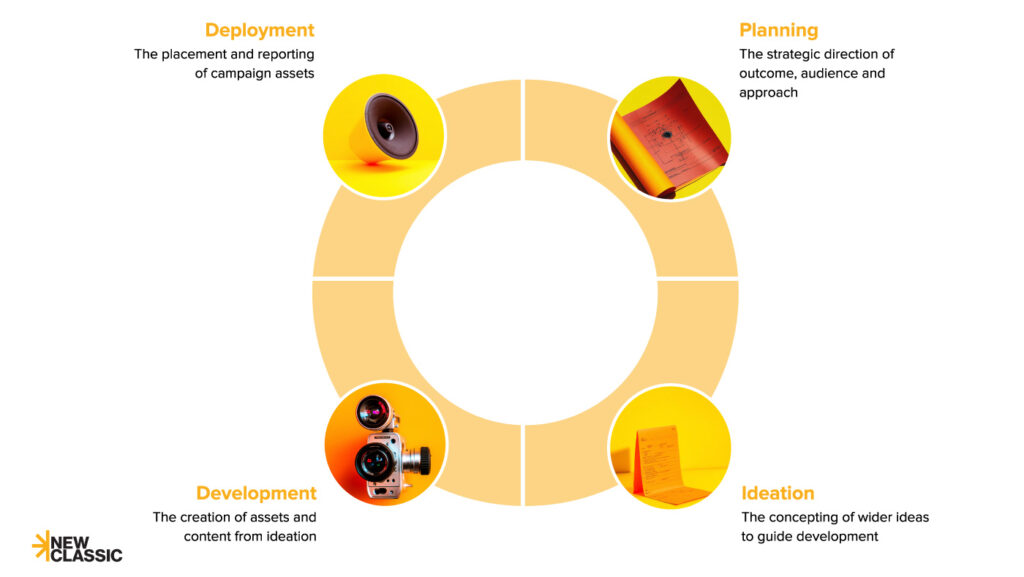

From a slow-moving traditional advertising process best geared to create a TV campaign, to a fast-moving flywheel that iterates and optimises, advertising has been comprised of four distinct phases: planning, ideation, development and deployment. In the past, these phases worked in a completely linear fashion, whereas today they may be more bi-directional.


In fact, when we consider the wheel of advertising, there are six major models that operate the same structure in different ways, at different speeds. These six ‘flywheels’ of advertising show different ways the industry can operate, from traditional to integrated, modern, augmented, automated and completely artificial. Each builds on what came before it and instead of supplanting its predecessor, the industry continues to stretch across them.
While the ‘traditional’ advertising model may have fallen out of fashion, many organizations still use it, in acknowledged and unacknowledged ways. By looking at these models, we can plot the course of the industry and consider the role of strategy and artificial intelligence within it.
1. The Traditional Flywheel
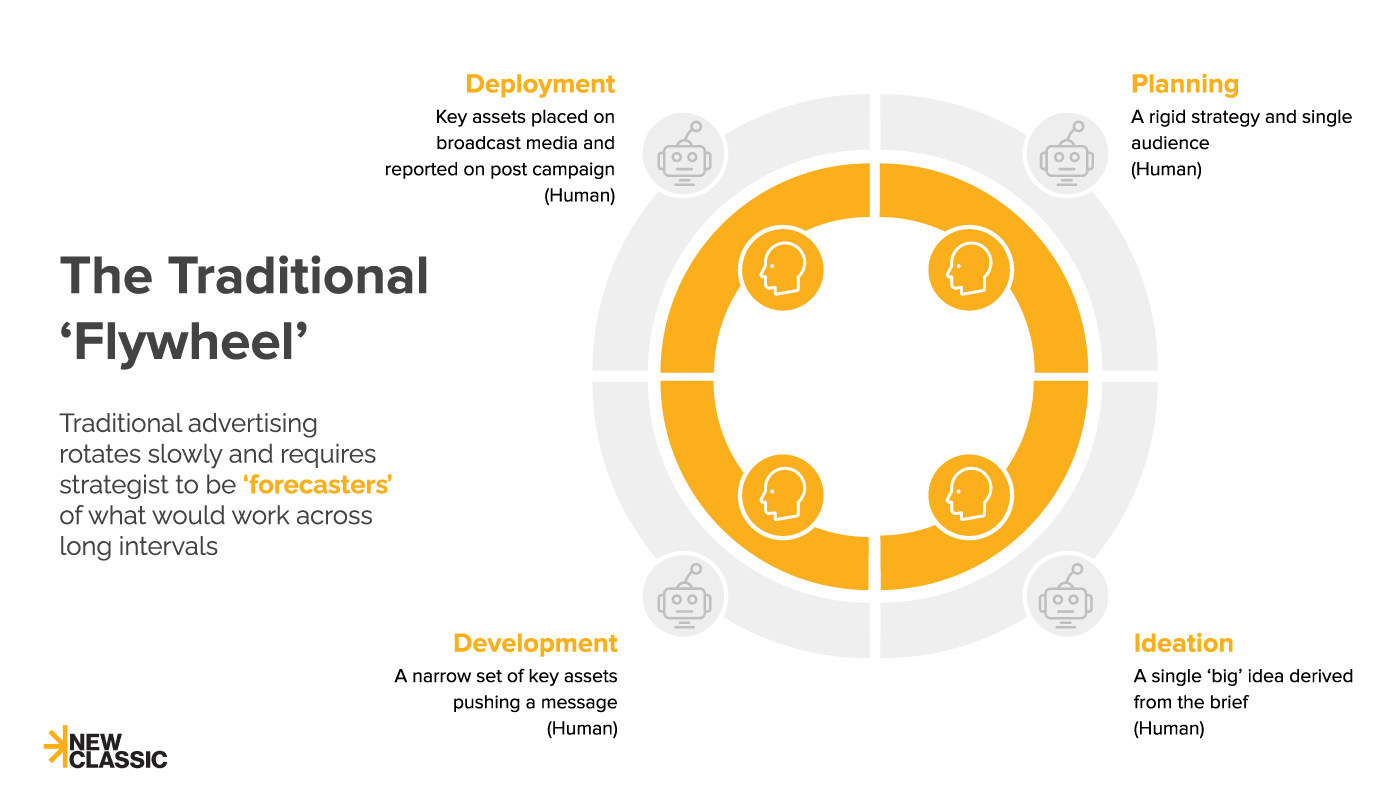

The traditional flywheel of advertising is a slow, intentional process which aims to create a ‘big’ impactful idea. Most popular during the pre-internet age of advertising, strategists are expected to be ‘forecasters,’ who can predict where an opportunity exists for marketing once a campaign is developed. They serve as the voice of the consumer to guide significant time, creative development and investment.
Once a singular strategy is set, the traditional flywheel progresses through the creation of a big idea, which is articulated in a set of key assets and placed in predominantly broadcast, impact channels. Results of this campaign are covered in a ‘post-campaign’ analysis, as any more dynamic information wouldn’t be actionable.
While the traditional flywheel seems old-fashioned today, many organizations still use it for its simplicity, human control and the ability to ‘set’ the tone for a brand in culture. A skepticism towards modern marketing and digital channels often pushes marketers towards this flywheel.
2. The Integrated Flywheel
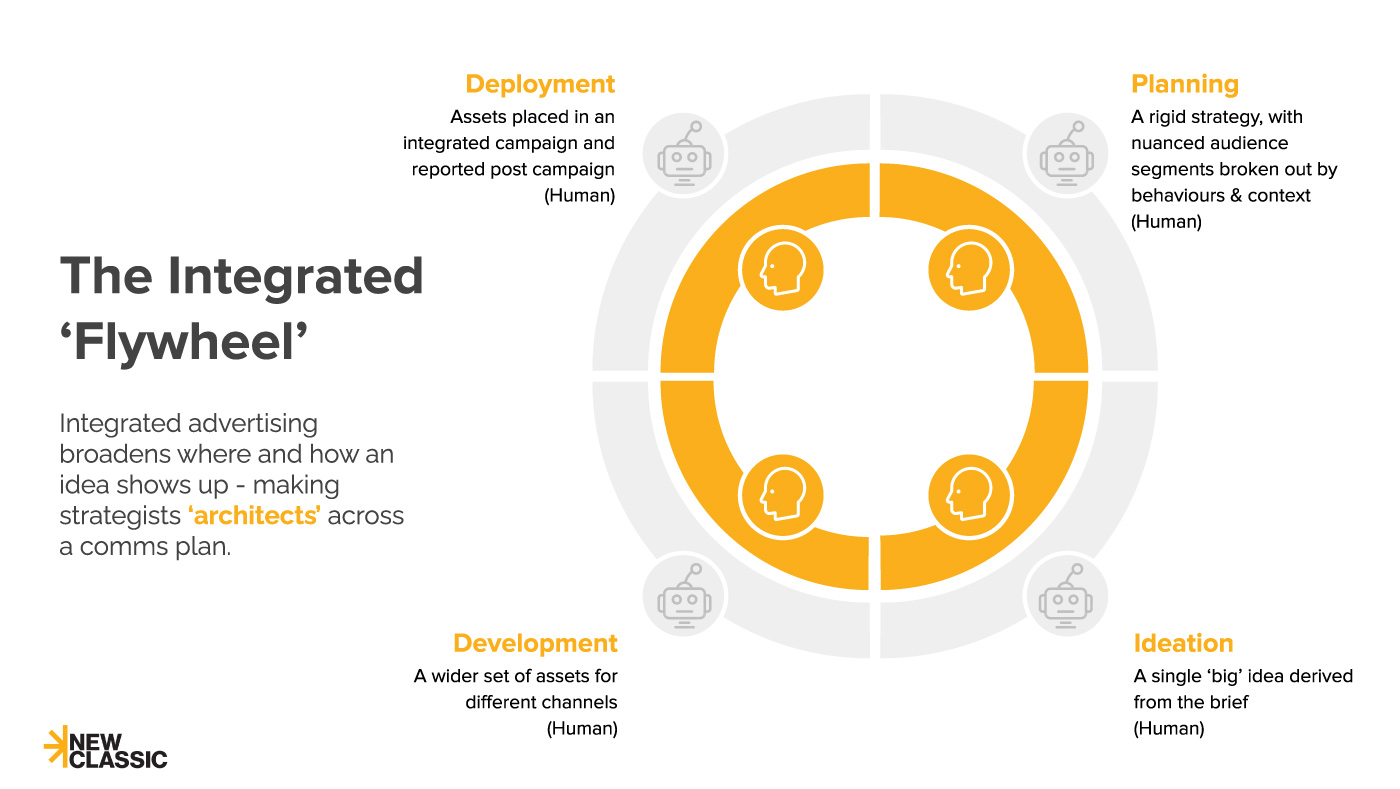

With media fragmentation comes the need to stretch an idea across more touchpoints in different ways. The integrated flywheel broadens where and how an idea shows up – stretching a rigid strategy across wider touchpoints or segments. While still one-directional, strategists serve as ‘architects’ that build out a framework for how a single ‘big’ idea shows up in different ways.
The breadth of integrated touchpoints means an idea is articulated in a wider set of touchpoints and assets, which cater to different channel nuances and communication contexts. Results are aggregated across these touchpoints post-campaign, as production can do very little to optimise or action insight created during the campaign period.
The integrated flywheel of advertising is still slow, but its breadth and nuance in comms planning gives the swings a brand takes more opportunity to succeed. Companies that acknowledge various states of attention and audience needs/segments, but lack dynamic reporting and production capabilities, often fall within this model.
3. The Modern Flywheel
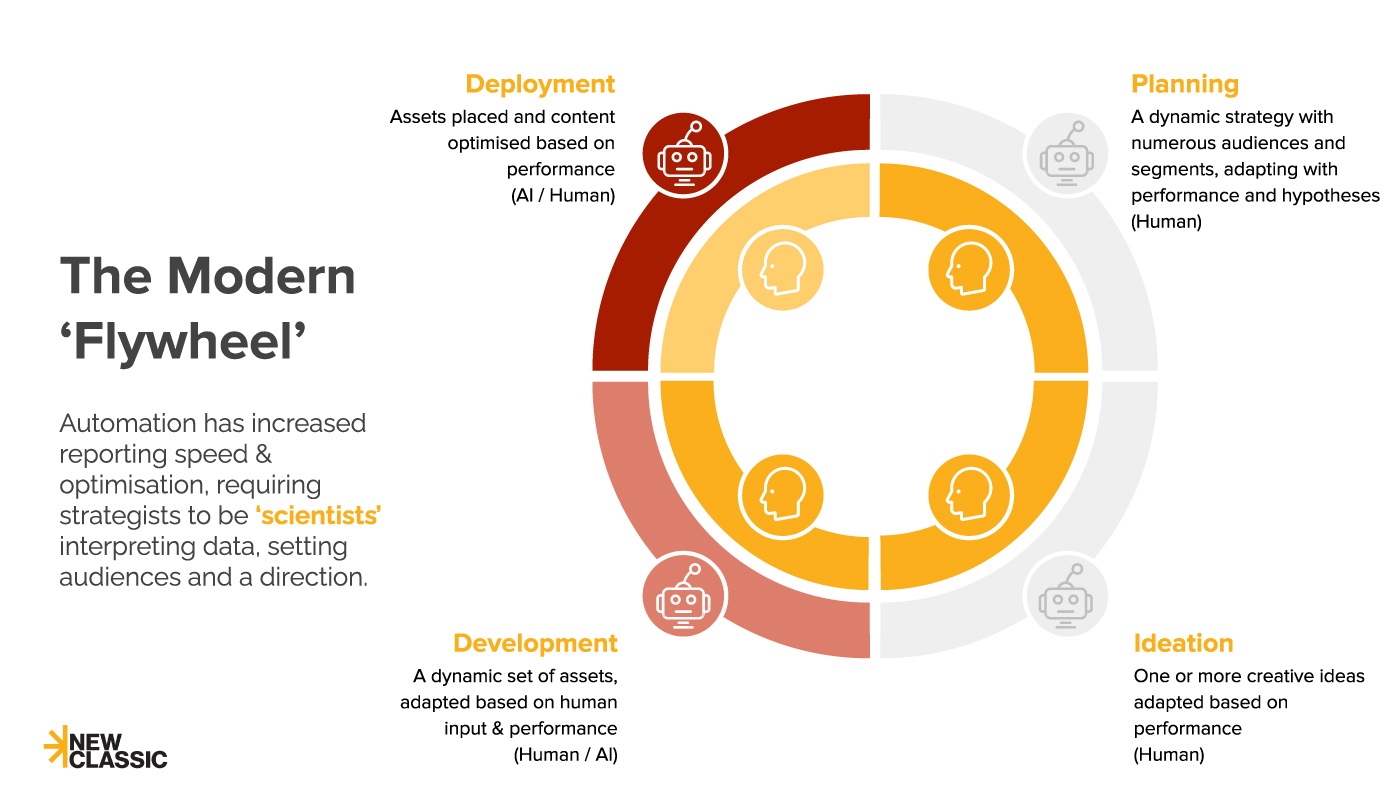

As automation and data analysis has developed, in-market insight and optimisation has created the modern flywheel of advertising. In response to this, strategy has become more dynamic, with strategists serving as ‘scientists’ who can test different hypotheses, guide optimization and adaptation in campaign and help prioritize and choose between different creative ideas.
The modern flywheel moves bi-directionally as insight can flow back into ideation and strategy once a campaign is in market. The ability to quickly identify and, through more dynamic production, action insights in assets allows for advertisers to ‘find right’ more than previous models. Whereas the traditional and integrated flywheels required a prediction, the modern flywheel allows for various levels of hypothesis development.
While the level at which advertisers optimise varies, from tactical to full strategy, the modern flywheel taps into the data and behavioural insight capabilities of, especially digital, channels to iterate. A ‘big’ idea may still exist, but it often builds amongst several articulations of a strategy.
Companies that have data capabilities, phase resourcing for development and build teams that are engaged post-launch can activate a modern flywheel in advertising. Often, the level of human resource is the speed limit on how fast and for how long this flywheel can run.
4. The Augmented Flywheel
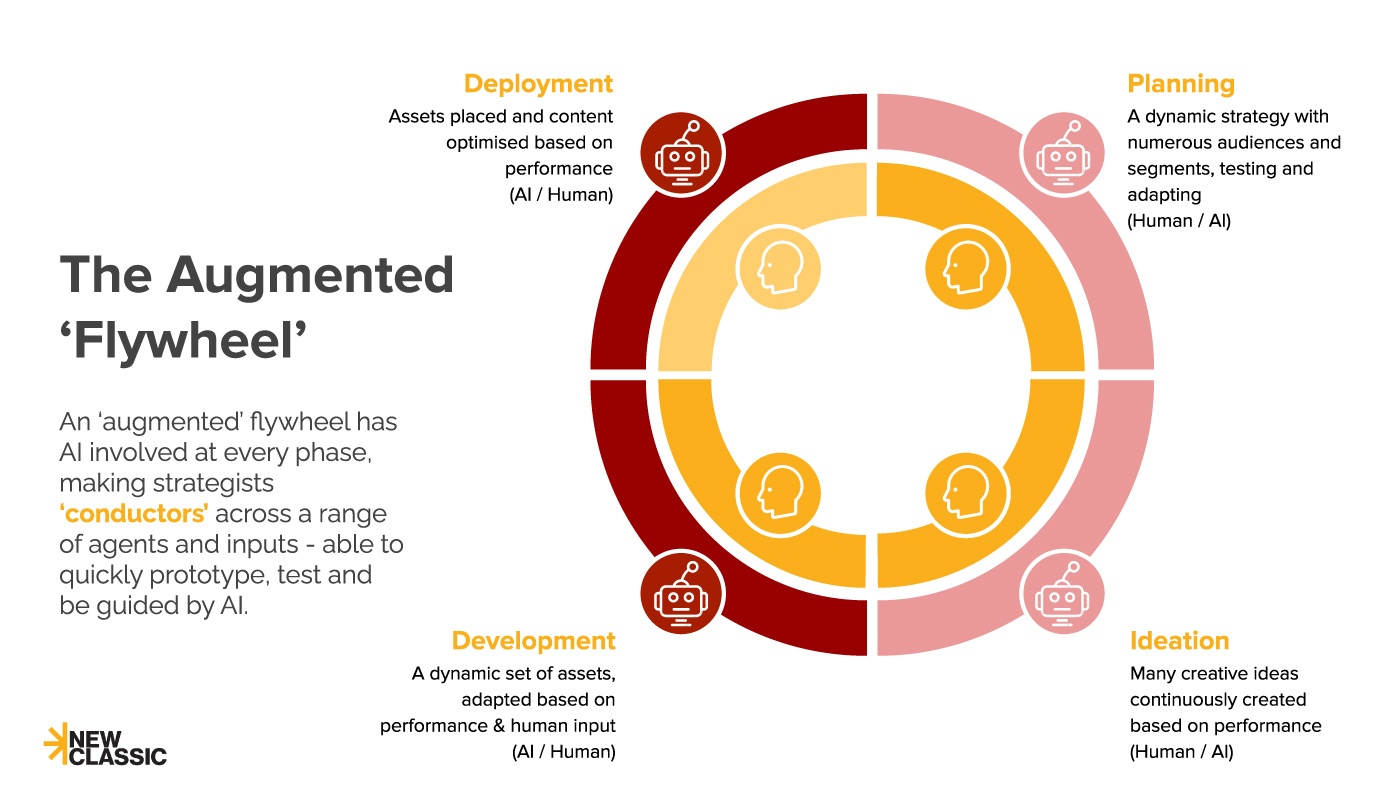

Developments in AI are seeing greater possibilities for an augmented flywheel in advertising. A more equal role for AI and humans sees advertisers use the technology as a collaborator. Strategists serve as ‘conductors’ in this model, tying together and directing human resource, information and AI into an even wider and more dynamic strategy.
AI agents can investigate different insights and their implications. Generative AI can highlight what a strategy may unlock and what ideas are possible. The flywheel can quickly shift forward and back at speed. This speed requires reporting to be AI-led, pulling data and performance into insights dynamically in a way that quickly surfaces it for a strategist and team.
AI production capabilities allow insights to quickly be turned into new or adapted assets. Creative ideation can occur continuously. Teams don’t just ‘find right,’ they continuously redefine and optimize against it. A ‘big idea’ may still exist, but it evolves and continues to develop – as a living creative concept.
Companies with the technology capabilities to run an augmented flywheel are often staffing technology-engaged humans, moving beyond the hype of AI to integrate it as a true collaborator and removing the speed limit of the modern flywheel.
5. The Automated Flywheel
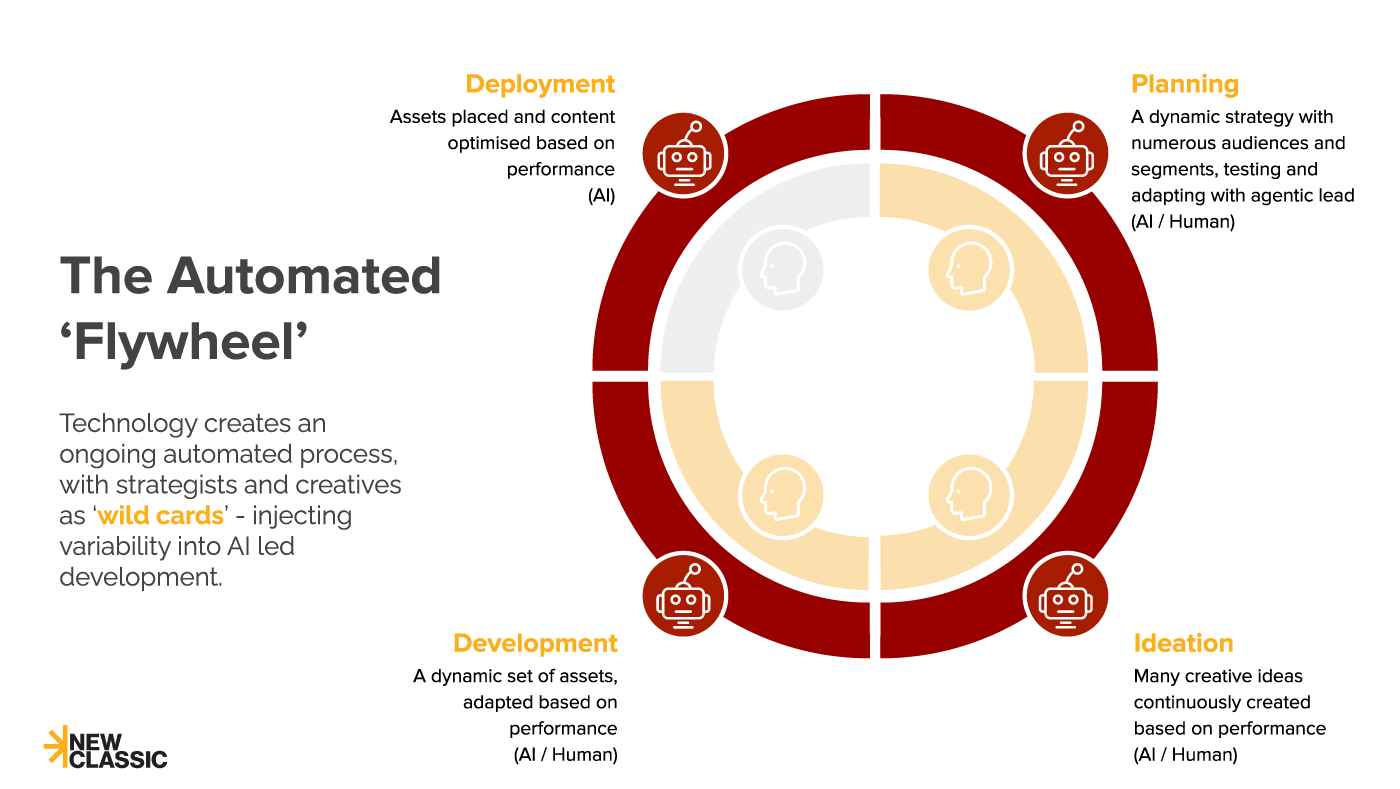

As automation moves further from reporting into the rest of the flywheel, the ability to create an ‘automated’ flywheel increases. Agentic development in recent ads like PUMA’s speak to a future where the entire advertising process can be run independently by AI. Strategic development and ideation is led by AI as a continuous process of ideation, development and testing, with optimisation occurring throughout a campaign.
A vast number of creative ideas and executions are grouped along different hypotheses, with AI grouping thinking in ways we can understand, follow along with and input into. The role of a strategist in this AI-led model is to be a ‘wild card,’ creating new hypotheses and challenging the model to think in new ways. Similar to how AI players in Go struggled with counter-intuitive thinking, strategists train AI advertising agents to consider new perspectives and broaden the scope of their ideas.
Core ideas and production are still human-guided alongside the breadth of AI work. Companies who are culturally ‘hands-off’ with advertising and ‘hands-on’ with technology are most apt to adopt the automated flywheel.
6. The Artificial Flywheel
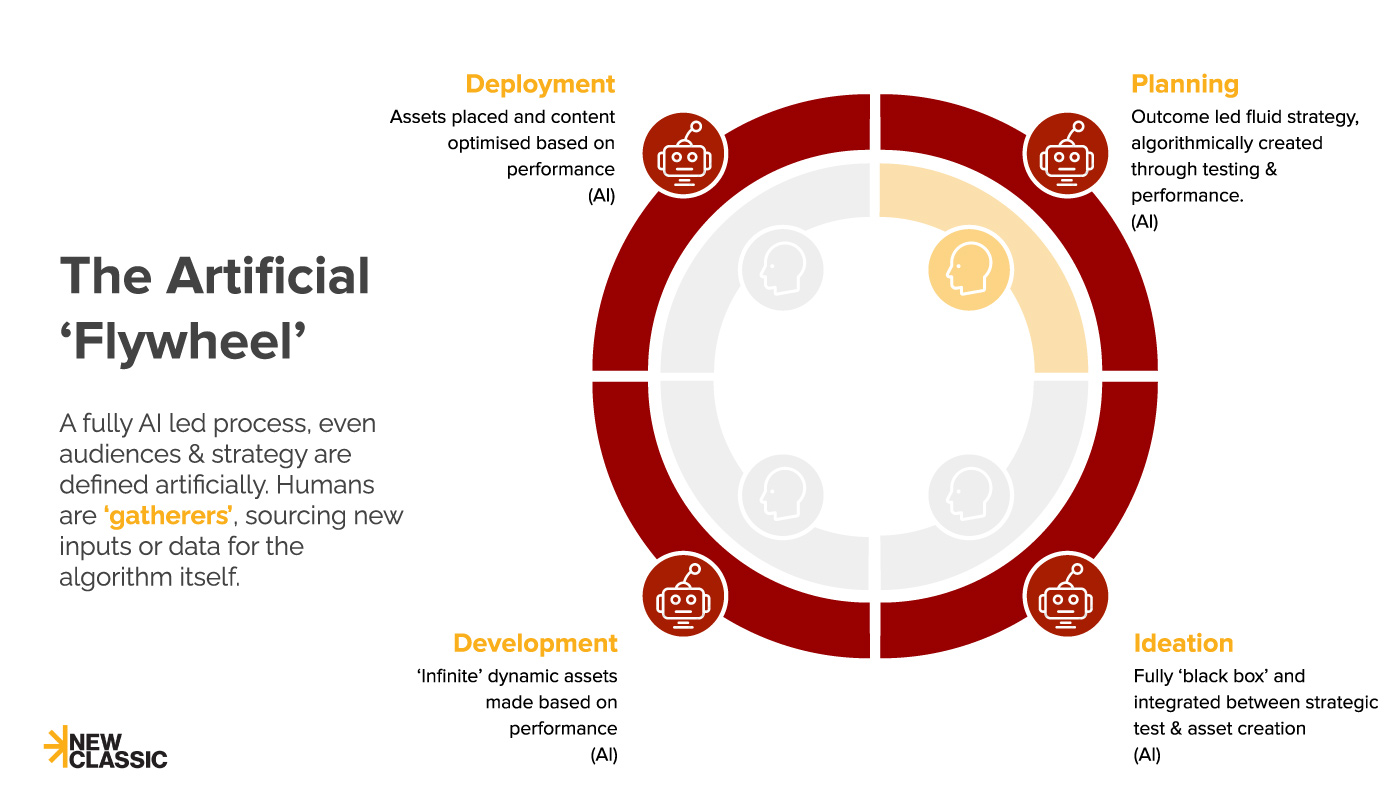

As AI develops in advertising further, a blackbox approach to it will continue to form. As Meta outlined in April 2025, digital media owners see a vision of a completely ‘hands-off’ marketing process. AI takes an overall business outcome and handles everything from audience identification, strategic development, creative ideation, asset creation and deployment in media.
The pure artificial flywheel moves incredibly quickly and harnesses a near ‘infinite’ amount of creative – in a way distributing advertising to brute force attack a business outcome. Over time, it optimises towards specific audiences, messaging and outcomes, slowed down only by the humans it markets to.
The role of a strategist, or any human, in this process is limited. At most, they serve as overseers and guide rails; at least, they are gatherers of new information to put into the algorithm. Novel stimulus put into the black box may create new outputs from it.
Similar to how AI translates languages, we may struggle to understand the logic or processes within the flywheel. This obscurity means that trust in the AI’s ability and the owners of it are the largest barrier to artificial flywheel adoption.
They’re All Already Here. They’re Just Not Evenly Distributed.
So which of these six flywheels is the future of advertising? Are we barreling towards an artificial industry or set to regress to traditional foundations?
The answer is all at once. In fairness, each of these flywheels exists in some form now and will continue to. Brands and organizations are selecting a place on this spectrum based on worldview and company culture. Where the bulk of the industry may distribute towards the center (Modern/Augmented), extremes will exist and forces will slowly push brands to the right.
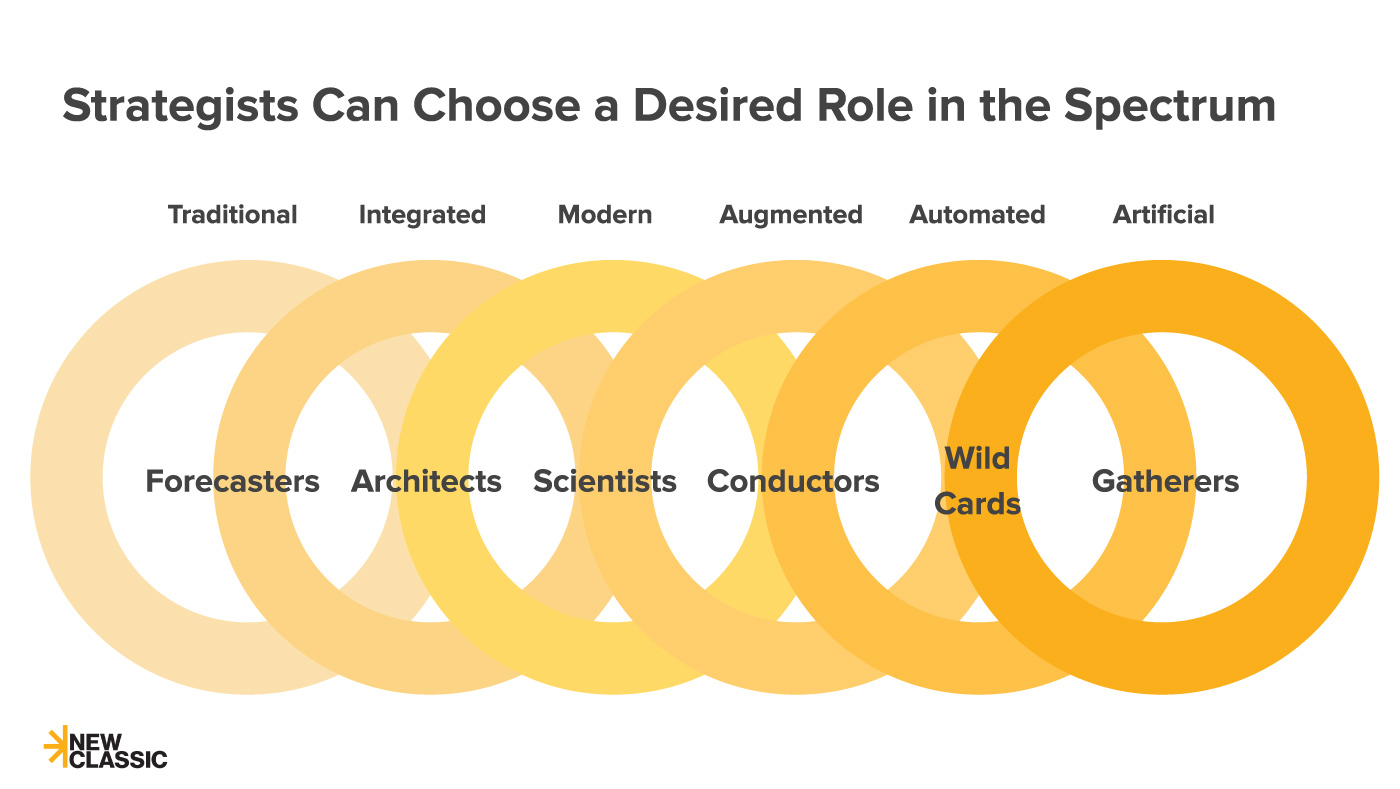

In our own agency, we’re firm believers in an augmented future. The use of AI as collaborators who lead parts of the process and support others leverages the most strengths from across this spectrum. We’re conductors and we believe strategists have always been.
However, each strategist, new and old in the industry, will need to build a role in their own position on this spectrum. While every role discussed is part of the strategist’s repertoire of skills, what they decide to prioritize will, in effect, skew advertising towards one of a number of possible futures.
For the full ‘Reinventing the Wheel’ presentation, click here.
If you want to see how we’re using AI, check out Airgo.

